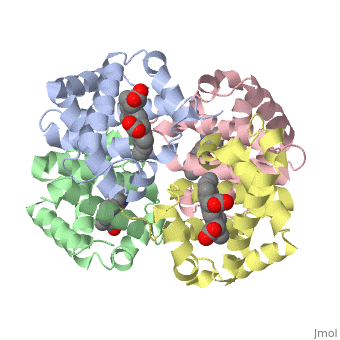Introduction to protein structure
From Proteopedia
(Difference between revisions)
| Line 20: | Line 20: | ||
== Ways of representing protein structure == | == Ways of representing protein structure == | ||
| + | Protein structures can be displayed in many different ways. In <scene name='57/575866/Spacefill_segment/1'>spacefilling</scene> models, all of the non-hydrogen atoms are shown as spheres with their van der Waals radii. In the <scene name='57/575866/Ball_and_stick_segment/1'>ball and stick</scene> model, the atoms are shown as smaller balls, connected by sticks; this is further simplified in the <scene name='57/575866/Stick_segment/1'>stick</scene> model, which only shows the bonds between atoms. <scene name='57/575866/Backbone/2'>Backbone</scene> shows only the N-Calpha-C=O repeating unit; the <scene name='57/575866/Cartoon/1'>cartoon</scene> representation shows the secondary structures. | ||
| + | |||
| + | '''Questions based upon these scenes:''' | ||
| + | Which of these representations would be best for showing... | ||
| + | |||
| + | --the secondary structures present in a molecule? | ||
| + | |||
| + | --Channels, holes, or pockets in a protein? | ||
| + | |||
| + | --Residues in the active site of an enzyme? | ||
| + | |||
| + | Explain your answers. | ||
== Secondary Structures == | == Secondary Structures == | ||
</StructureSection> | </StructureSection> | ||
Revision as of 04:39, 16 January 2014
Levels of Protein Structure
| |||||||||||
Proteopedia Page Contributors and Editors (what is this?)
Ann Taylor, Joel L. Sussman, Alexander Berchansky, Eric Martz, Israel Hanukoglu, Jaime Prilusky, Nick Kenworthy

